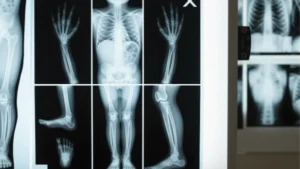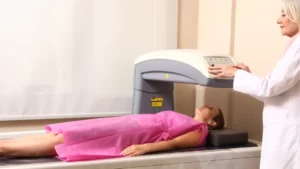Millions of people suffer from chronic pain, with conditions like arthritis, back pain, and nerve disorders affecting daily life. While medications provide temporary relief, they don’t always address the root cause of the pain. That’s where a pain management facility comes in. These specialized clinics focus on diagnosing and treating pain using non-surgical pain relief methods, physical therapy, and advanced pain relief techniques.
But what exactly does a pain management facility do? What conditions do they treat? And how do you find the best pain clinics near me? Keep reading to learn more about chronic pain treatment options and how to take control of your health.
What is a Pain Management Facility?

A pain management facility is a specialized medical center designed to diagnose and treat both acute and chronic pain conditions. These clinics are staffed by pain relief specialists, including pain management doctors, physical therapists, and interventional pain specialists, who work together to create personalized treatment plans.
Unlike general healthcare providers, a pain management facility focuses on long-term solutions, using non-surgical pain relief techniques such as:
- Physical therapy for pain management
- Chronic pain treatment with injections and minimally invasive procedures
- Lifestyle and rehabilitation programs to improve mobility
- Pain relief specialists who develop custom treatment plans
For people dealing with persistent pain, injury recovery, or mobility issues, a pain management facility can provide the support and expertise needed to regain quality of life.
Common Conditions Treated at a Pain Management Facility

Pain management clinics treat a wide range of conditions, from back pain and migraines to nerve disorders and post-surgical pain.
1. Chronic Pain Conditions
Chronic pain lasts for more than three months and often affects daily life. Arthritis pain management, fibromyalgia, and lower back pain treatment are among the most common conditions treated.
2. Post-Surgical and Injury-Related Pain
Surgical recovery can be painful, especially after orthopedic procedures or major surgeries. Pain relief specialists help patients recover faster by reducing pain and restoring mobility.
3. Nerve Pain and Neuropathy
Neuropathy, caused by diabetes, nerve compression, or injuries, leads to tingling, burning, or numbness. Pain management doctors use medications, injections, and nerve stimulation to relieve symptoms.
4. Migraines and Headaches
For people suffering from chronic migraines, pain management clinics offer solutions beyond medication, such as nerve blocks and lifestyle adjustments.
5. Cancer-Related Pain
Cancer treatments can cause severe pain. Pain management doctors work closely with oncologists to provide chronic pain treatment that improves comfort during treatment.
6. Work-Related and Repetitive Strain Injuries
Injuries from repetitive movements, poor posture, or physically demanding jobs can lead to chronic pain. Physical therapy for pain relief is often recommended to help patients recover.
Who Should Consider Visiting a Pain Management Facility?
You may benefit from visiting a pain management facility if you:
- Experience chronic pain that affects daily activities
- Have tried over-the-counter medications with little to no relief
- Are recovering from surgery and need non-surgical pain relief
- Have arthritis, back pain, or nerve disorders
- Need a personalized treatment plan beyond traditional painkillers
- Want to improve mobility, function, and quality of life
If any of these apply to you, finding a back pain treatment center or pain relief specialists near you could be the key to long-term relief.
How to Choose the Right Pain Management Facility
Searching for “the best pain clinics near me?” Choosing the right pain management facility is essential to getting the best care. Here’s how to choose a pain clinic:
Expertise of Pain Management Doctors
Look for clinics with board-certified pain relief specialists experienced in treating your specific condition.
Range of Treatments Offered
The best pain management facilities offer non-surgical pain relief, physical therapy, and interventional pain management.
Reputation and Patient Reviews
Search for best pain clinics near me and read patient reviews to learn about the clinic’s success rate.
Insurance and Payment Options
Make sure the clinic accepts your insurance and offers affordable chronic pain treatment plans.
Location and Accessibility
Choose a pain management facility that is conveniently located and easy to access.
Taking the time to research your options can help you find a back pain treatment center or arthritis pain management clinic that fits your needs.
What to Expect During Your First Visit to a Pain Management Facility
Visiting a pain management facility for the first time can feel overwhelming, especially if you’ve been struggling with pain for a long time. Knowing what to expect during your visit can help you feel more prepared and confident in your treatment journey. Your first appointment will focus on understanding the cause of your pain, exploring treatment options, and developing a personalized care plan to improve your quality of life.
1. Comprehensive Evaluation
Your visit will begin with a detailed consultation with a pain management doctor. They will ask about:
- The location, intensity, and duration of your pain
- Any past injuries, surgeries, or medical conditions
- Current medications, therapies, or treatments you’ve tried
- Lifestyle factors, such as physical activity, diet, and stress levels
This discussion helps the doctor understand the root cause of your pain and determine the best course of action for relief.
2. Diagnostic Testing
If necessary, the doctor may order diagnostic tests to get a clearer picture of what’s causing your pain. Common tests include:
- X-rays to check for bone or joint abnormalities
- MRI or CT scans to examine soft tissue, muscles, and nerves
- Electromyography (EMG) or nerve conduction studies to assess nerve function and detect neuropathy
- Ultrasounds for evaluating muscle and joint movement
These tests provide critical insights into your condition and help ensure an accurate diagnosis before starting treatment.
3. Personalized Treatment Plan
Once your doctor identifies the source of your pain, they will create a customized treatment plan based on your specific needs. Your plan may include:
- Physical therapy for pain relief, designed to improve mobility and strength
- Non-surgical pain relief techniques, such as injections, nerve blocks, or acupuncture
- Minimally invasive procedures for chronic pain treatment, including spinal cord stimulation or radiofrequency ablation
- Lifestyle modifications, such as exercise programs and ergonomic adjustments
4. Discussion of Pain Relief Options
During your visit, the doctor will explain various pain relief options and their benefits. Depending on your condition, they may discuss:
- Medications, such as anti-inflammatories or muscle relaxants
- Interventional treatments, like epidural steroid injections or trigger point injections
- Complementary therapies, including chiropractic care, acupuncture, or massage therapy
- Behavioral techniques, such as stress management and cognitive therapy for pain reduction
Your doctor will help you understand which treatment approach is best for you, ensuring that your plan aligns with your health goals and lifestyle.
5. Follow-Up Appointments
Chronic pain treatment often requires ongoing care and adjustments to your plan. Your doctor will schedule follow-up visits to:
- Monitor your progress and response to treatment
- Adjust medications or therapy plans as needed
- Introduce new pain relief strategies if necessary
- Provide continued support to help you stay on track
These follow-ups ensure that your treatment is working effectively and that you’re getting the best possible relief.
Benefits of Seeking Treatment at a Pain Management Facility

Pain management facilities provide a variety of benefits that go beyond temporary relief. These include:
Improved Mobility and Function
Pain relief treatments help restore range of motion, flexibility, and strength, allowing patients to return to normal activities without discomfort.
Reduced Reliance on Pain Medication
Many patients seek non-surgical pain relief to avoid long-term reliance on opioid medications. Clinics offer alternative pain solutions that focus on treating the root cause.
Personalized Treatment Plans
Each patient receives a customized care plan that fits their condition, symptoms, and treatment preferences.
Access to Advanced Pain Relief Techniques
From spinal injections to nerve stimulation, modern pain management facilities use state-of-the-art techniques to treat pain more effectively than traditional methods.
Enhanced Overall Quality of Life
By reducing pain, restoring mobility, and improving function, pain clinics help patients regain control over their lives, allowing them to enjoy better health and well-being.
Take the Next Step Toward Pain Relief
Living with chronic pain doesn’t have to be a daily struggle. Finding the right pain management facility can help you regain mobility, reduce discomfort, and improve your quality of life.
For expert care, One Step Diagnostic offers comprehensive pain management solutions, diagnostic imaging services, and advanced non-surgical pain relief treatments. Their experienced team of pain relief specialists is dedicated to helping patients achieve long-term relief through customized treatment plans.
Visit One Step Diagnostic today or explore their medical diagnostic imaging services to take the first step toward lasting pain relief.




